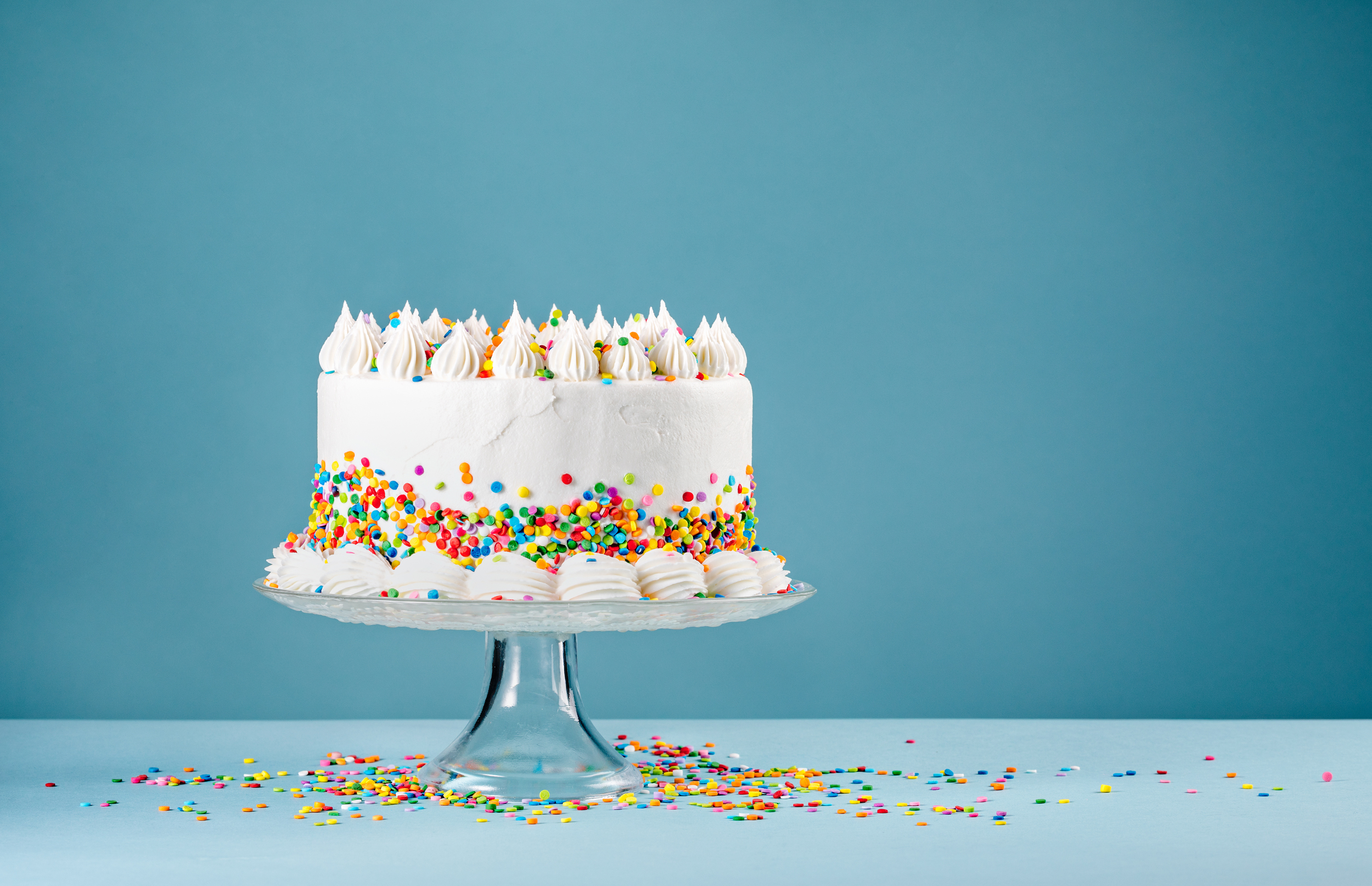Let Us Eat Cake!
Imagine this: you’re a kid and it’s your birthday. All your besties are gathered around, all eyes are on the brightly lit birthday cake, all voices are hollering out a classically terrible rendition of "Happy Birthday." And then the moment of truth: with only one breath, you have to—and I cannot stress this enough, have to—extinguish all of the candles. After all, the number of candles left flaring after an attempt to blow them all out with one breath is reflective of the number of boyfriends or girlfriends you must have—and your siblings will tease you about that to no end. Plus, with candles left burning, the birthday wish you made won’t come true. So now you might be accidentally, unconsentingly, polyamorous—and your wish to have a talking dog won't come to fruition.
As a kid, it’s a pretty not-ideal way to start the next year of your life.
I remember wondering why birthday candles were even a “thing” when I horrifying left three candles lit one year. And while we're questioning birthday traditions, whose idea was it to sing a song at the birthday person (where do I look? what do I do?) while presenting the cake? As it turns out, the birthday traditions of today have a long and varied history.
A tradition of the ancients
Birthdays are recognized around the world, a phenomenon that crosses cultures, ethnicities and religions. But the first birthday celebrations weren’t recognizing the literal day of physical birth—instead, they were coronation celebrations: Ancient Egyptians believed that when pharaohs were crowned, they became gods, and thus they celebrated the “birth” days of their gods.
Ancient Greeks took the celebration of god/goddess birthdays and furthered it by adding cakes with candles. In honour of Artemis, the goddess of the moon, they offered her round (moon-shaped) cakes with lit candles to represent the moon’s glow. It was believed that when the candles were blown out, the smoke would carry prayers to the gods in the skies above.
We then have the Ancient Romans to thank for bringing birthday celebrations from the celestial realm to the human one, as they are credited with being the first to celebrate birthdays of the flesh. But only influential men got to celebrate with the flat, circular birthday cakes made of flour, nuts and honey; women’s birthdays weren’t celebrated until the 12th century.
When candles met cake
During the 15th century, bakers in Germany began selling cakes marketed toward celebrations of birthdays and weddings. It was during this time that birthday cakes made their way to the children with the onset of Kinderfest, a children’s birthday festival of dance, singing and desserts. It is also from Kinderfest that we find modern crediting of candles on birthday cakes, as the event eventually morphed into individual children’s birthday parties. The birthday child’s cake featured a candle called the lebenslicht (light of life) that burned the entire day until the cake was eaten in the evening, a tradition said to protect the child’s mortal soul.
One of the earliest records of birthday cake candles reflecting a person’s age dates to 1746, also in Germany, when a guest at Count Ludwig von Zinzendorf’s birthday celebration described “a cake as large as any oven to bake it in, and holes made in the cake according to the years of the person’s age, each one with a candle stuck into it, and one in the middle.”
Next-door in Switzerland is where we find more modern origins recorded for the blowing out of candles on a birthday cake. A book of folklore published in 1881 notes the Swiss custom that a birthday person must blow out all the candles one by one, before the cake can be eaten. (Side note: considering I’m half Swiss, I’m off to ask my dad why we adopted the idea of trying to blow the candles out all at once instead of one-by-one—which would have spared childhood me a lot of stress and "boyfriends"!)
Lyrical popularity—and controversy
As for that diddy we all sing during the presentation of a birthday cake? While it's now the most popular English song in existence, it wasn't initially written with the words we belt out today. Although there's some controversy over its origin, the generally accepted story is that it began with a song titled "Good Morning to All," which was written in the 1890s by sisters Patty and Mildred Hill, who were also teachers.
The first appearance of the birthday lyrics we know today appear to have been written by a woman in 1901 and published as part of a poem called "Roy's Birthday." But it wasn't until 1912 that the sisters' melody and the birthday poem were combined, and another 12 years before the version we know today was published in a songbook. Then, in 1935, the melody was copyrighted by another Hill sister.
But there's one last twist: the company that procured the copyright in the 1980s and claimed it would be valid until 2030 garnered approximately 2 million dollars per year in licensing fees until the matter was brought to court in 2015. A year later, the courts ruled in favour of the song officially existing in the public domain, free from royalties and restrictions.
A tradition for all time
Regardless of your candle superstitions or ability to carry a tune, it’s safe to say that when you serve up a birthday cake, you’re taking part in a custom of ancient origins with modern revisions—a tradition held long before your birthdays began, that will continue long after you’ve blown out your last candle.
The candle-blowing dichotomy
According to some psychologists, the ritualistic process of blowing out birthday cake candles can actually cause you to perceive the cake as tasting better (yay for you!), but, blowing out the candles on your birthday cake can also increase the bacteria on the cake by up to 1400% (boo for everyone else!).





